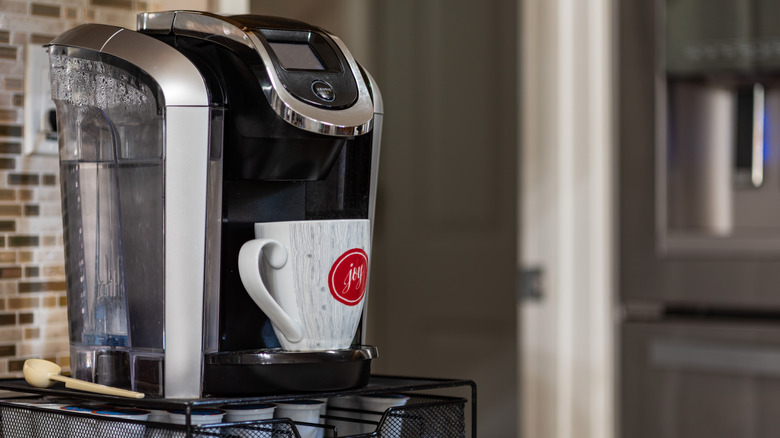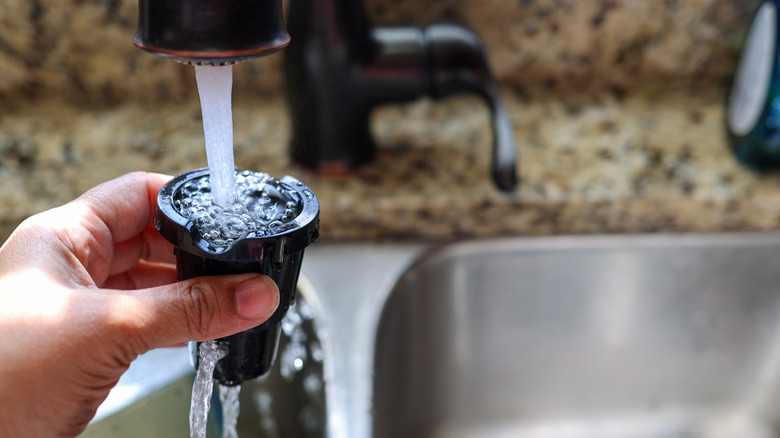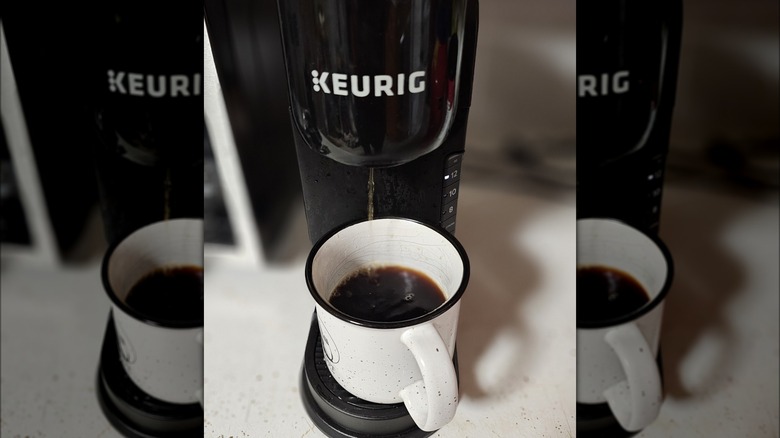How Often Should You Be Cleaning Your Keurig (& Mistakes To Avoid)
We may receive a commission on purchases made from links.
For many U.S. households, having a coffee in the morning is a routine that isn't likely to be skipped — and sometimes it's a go-to for a quick boost throughout the day! In fact, according to Keurig's Q4 2023 results report, their brewing system can be found in approximately 40 million households. That's a lot of coffee! But, with individuals drinking coffee daily and having a brewing system in their home, how often does it get cleaned? On average, some components of a Keurig must be cleaned daily, including the pods, surface areas, and certain external components. Meanwhile, other parts of the machine can be tended to weekly or even monthly.
When cleaning a Keurig, there are also some important mistakes to avoid. As with other appliances, your machine needs to be unplugged, and specific parts must be taken out to prevent damage. There are also certain cleaning methods that shouldn't be used when deeper cleaning takes place. So, keeping these tips in mind can ensure your Keurig continues to run smoothly. That way, you can enjoy your daily cup of joe!
How often a Keurig should be cleaned
Like other appliances in the kitchen, Keurig's should be cleaned daily, with deep cleaning done weekly or monthly. The drip trays and water reservoirs can be detached from the Keurig and hand-washed with dish soap and warm water to prevent the spread of mold growth or unpleasant smells. While wiping down the surface areas with antibacterial towels can help with the spread of bacteria or dust buildup from sitting stationary in the kitchen. Above all else, the most important daily task is to remove pods from the holder after a cup of coffee is made to keep up with cleanliness.
Meanwhile, other parts of the Keurig should be cleaned weekly, like the Keurig's pod holder assembly (PHA). The PHA can be hand-washed with regular dish soap and thoroughly rinsed. The needle, where coffee grounds can collect, should be cleaned using pressured water or with a paper clip so that clogs are avoided and any leftover bits are pushed out. If the PHA isn't cleaned weekly, there are higher risks for mold formation or algae growth.
Every few months, descaling your Keurig is recommended. This process removes mineral buildup and avoids limescale. Depending on the amount of coffee made, descaling should occur every three to six months – more if multiple cups are brewed daily. Additionally, changing the water filter every three months is necessary to prevent unwanted mineral buildup.
Mistakes to avoid when cleaning your Keurig
Descaling a Keurig can be done in various ways. Many people have opted for a DIY fix using vinegar or lemon juice, but experts don't have much to say about the success of these alternatives, making Keurigs' name-brand descaling solution ($8.98 at Walmart) a top choice. When this substance is mixed, the Keurig must be set to descale mode with the water tank emptied. Depending on your machine, descaling instructions may vary, so check your model's instruction manual before you start. The tank is then filled with the descaling mixture and water so the machine can run multiple times until the tank is emptied. Following this, if it's been a few months since you last replaced your water filter cartridge, now is the time to do it.
This descaling process must be done correctly with the machine plugged in to ensure it is thoroughly cleaned. During regular cleaning, however, the Keurig must be unplugged. Once it's without power, the machine can be disassembled with all able parts removed. The machine's exterior should never be submerged, as the removal parts can be, and must be gently scrubbed. Submerging the machine in water can cause permanent damage. Lastly, clean the touchscreen panel with care, using a soft, damp cloth to prevent scratching or damaging the system's electronics. With this regular maintenance performed, the Keurig should remain in excellent condition.


